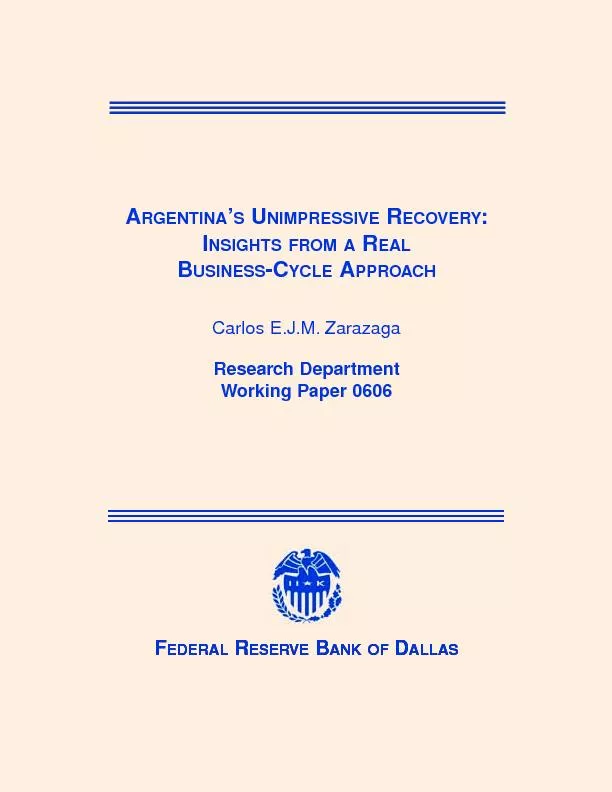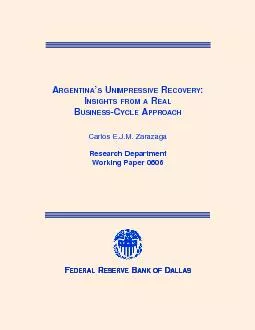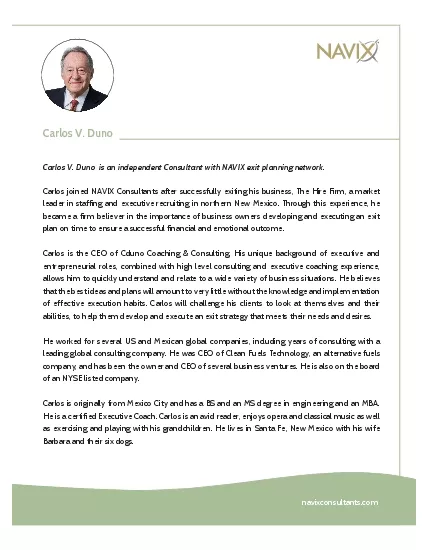PDF-Insights from a Real Carlos E. J. M. Zarazaga Telephone: 214.922.5165
Author : kittie-lecroy | Published Date : 2016-08-18
A legitimate question therefore is whether le out as have many similar episodes or whether it reflects as many believe an acceleration in the rate of growth that
Presentation Embed Code
Download Presentation
Download Presentation The PPT/PDF document "Insights from a Real Carlos E. J. M. Zar..." is the property of its rightful owner. Permission is granted to download and print the materials on this website for personal, non-commercial use only, and to display it on your personal computer provided you do not modify the materials and that you retain all copyright notices contained in the materials. By downloading content from our website, you accept the terms of this agreement.
Insights from a Real Carlos E. J. M. Zarazaga Telephone: 214.922.5165: Transcript
Download Rules Of Document
"Insights from a Real Carlos E. J. M. Zarazaga Telephone: 214.922.5165"The content belongs to its owner. You may download and print it for personal use, without modification, and keep all copyright notices. By downloading, you agree to these terms.
Related Documents














